Grape
Vitis rotundifolia
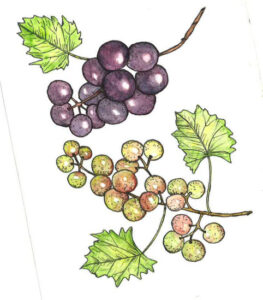
Grain de raisin (French), scuppernong (United States), मस्कैडिन अंगूर (Maskaidin Angoor, Hindi), મસ્કાડીન દ્રાક્ષ (Maskāḍīna drākṣa Gujarati), Zabibu ya Muscadine (Swahili), Canabka Muscadine (Somali), uva (Spanish), 麝香葡萄(shè xiāng pú tao, Mandarin), عنب) einab, Arabic)
Grapes and winemaking have been culturally significant throughout the world for thousands of years. Grapes are mentioned more than fifty times in Biblical scriptures, and wine has been central to Christian and Hebrew rituals as well as in ancient practices in Greece and Rome. In Florida, Muscadine grapes, also known as ‘muscadines’ are a native variety initially used by indigenous Americans and later cultivated by Europeans in the 16th century. Today they are eaten as fresh fruit and used in jams, jellies, juices, and artisanal wines. Unlike European grape varieties, muscadines have a thick skin and they grow well in hot humid weather which make them a Florida garden favorite.
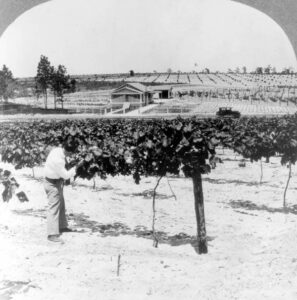
Grape vines are among the oldest cultivated fruits, and the earliest evidence of grape cultivation, known as viticulture, takes place in the Middle East approximately 8,000 years ago. Archaeological evidence of winemaking in Eastern Europe dates to roughly the same time. Grape cultivation is an ancient art that is described in cultural artifacts of the Egyptians, Phoenicians, Greeks, Romans, and in the Bible. Although the species and varieties used by each civilization varied, the grape was just as important a crop for winemaking in antiquity as it is today. Ancient Egyptian hieroglyphics depict cultivation of purple grapes, and the ancient Greeks and Romans grew grapes for food, wine and ritual. The muscadine grape native to Florida was initially used by indigenous Americans, and it was cultivated by European colonists in the 16th century. Although commercial production in Florida remains fairly small, many Floridians grow muscadines at home or buy them in summer months at u-picks, local grocery stores, farmers’ markets, and road-side stands.
Grapes are eaten fresh, jellied, squeezed, brined, pickled, fermented and dried. They have been culturally significant in many parts of the world, particularly for their role in winemaking, for thousands of years. There are more than 50 verses about grapes throughout the Jewish and Christian Bible that reference the fruit as a food as well as a religious symbol. Many Christian groups use wine during ritual worship, known as the Eucharist, to symbolize the blood of Jesus Christ and to represent the remission of sins as described in the Lord’s Supper; Luke 22:20 (NIV) ‘This cup is the new covenant in my blood, which is poured out for you.’ This practice dates to the early Christian church, and modern Christians who oppose the consumption of alcohol sometimes use grape juice as the “cup” or “wine” as a substitute. The Code of Canon Law of the Catholic Church (1983), Canon 924 says that the wine used must be natural, made from grapes of the vine, and not corrupt. In the Jewish texts, grape vines are one of the seven staple foods mentioned in Deuteronomy 8.8 ‘A land of wheat and barley, of vines and fig trees and pomegranates, a land of olive oil and honey.” Grape was also one of the seven fruits that Moses messengers discovered in the land of Israel. (Numbers 13: 20-23). Grapes themselves have no special kosher considerations, but wine, grape juice, and other grape products are some of the most highly kosher-sensitive. All grape juice and wines must be prepared under strict Orthodox rabbinic supervision and may not be handled by non-Jews. Today, there are more than 25 certified wineries in Florida, and the oldest is located in St. Augustine. Florida viticulture is rooted in more than a century of research on muscadines and hybrids. For now, the muscadine is most often seen as a fresh fruit at farmers’ markets and road-side stands, and processed into wine, jams, and jellies.
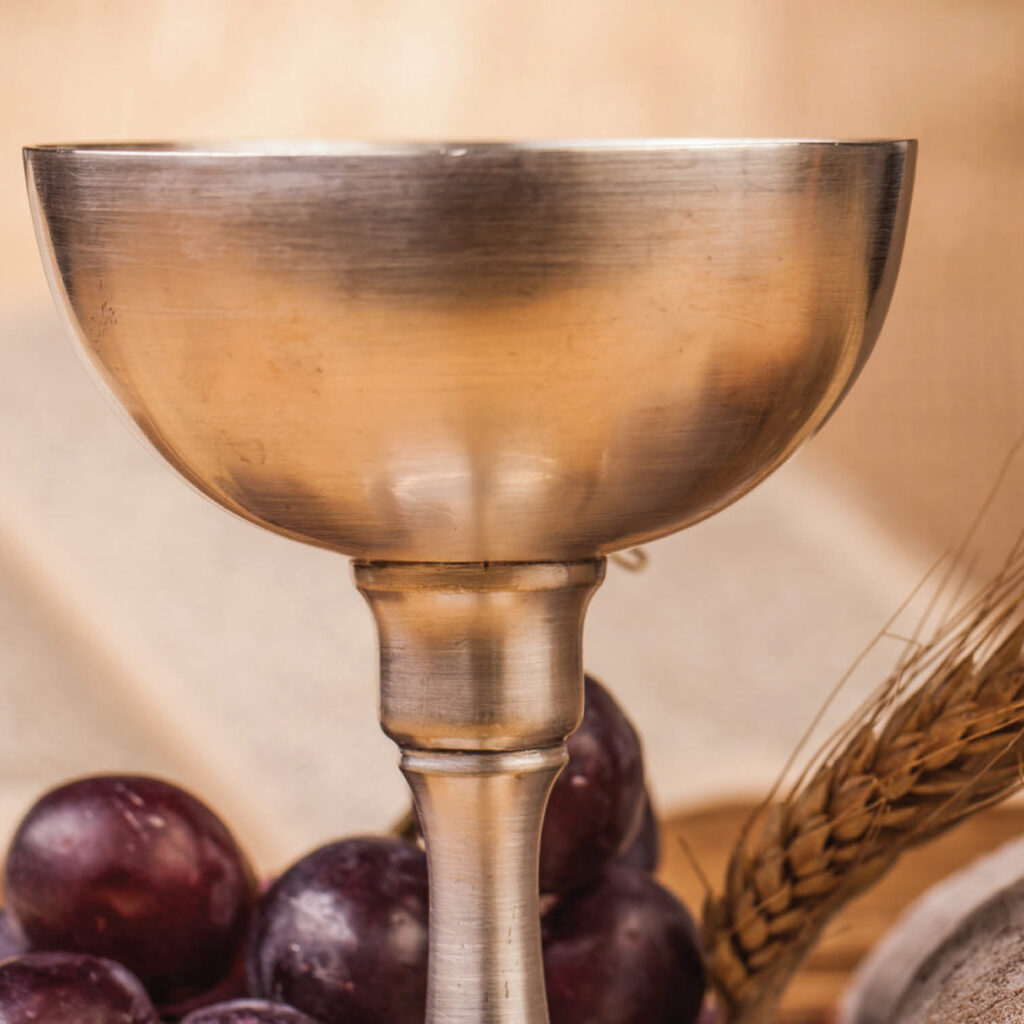
Muscadines are rich in polyphenols, fiber, and manganese; they are free of fat, sodium, and cholesterol.
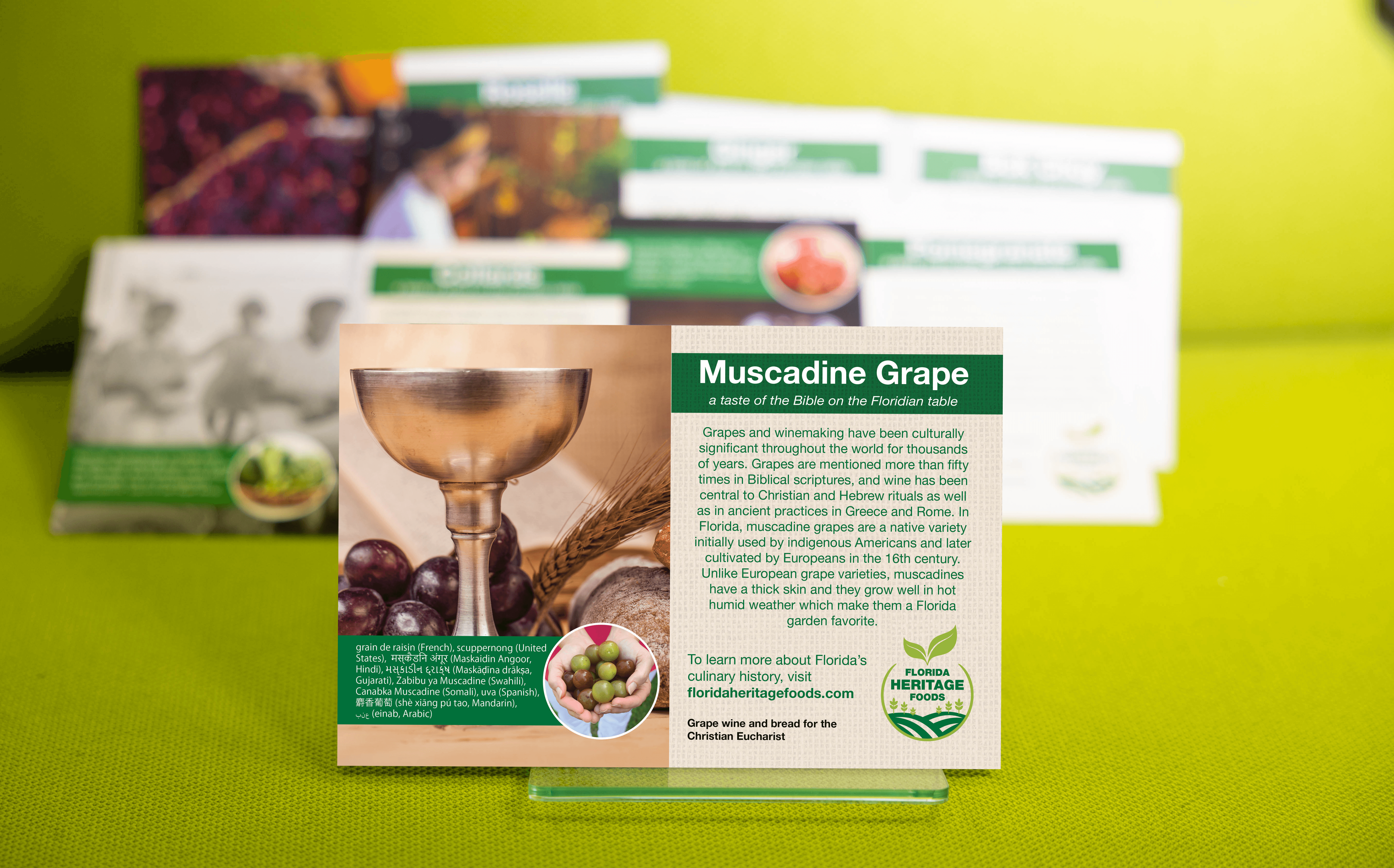

Plant in full sun via transplants in February or March; harvest grapes July through September. Vines are vigorous and should be supported with a fence or trellis. Prune branches after the vines has dropped all leaves in the winter.
To plan a heritage garden, download the ‘Planning a Florida Heritage Garden (PDF).’
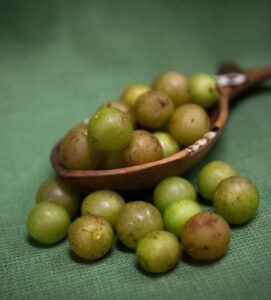
Santa Fe College Partnered with Multiple Organizations in a Collaborative Effort to Bring Awareness of the Heritage Plants In Florida.
BY CULTURAL HISTORY
BY GROWING SEASON
DROUGHT TOLERANT PLANTS
Commitment to Equal Access and Equal Opportunity
Santa Fe College is committed to an environment that embraces diversity, respects the rights of all individuals, is open and accessible, and is free of harassment and discrimination. For more information, visit sfcollege.edu/eaeo or contact equity.officer@sfcollege.edu.
SACSCOC Accreditation Statement
Santa Fe College is accredited by the Southern Association of Colleges and Schools Commission on Colleges (SACSCOC). For more information, visit sfcollege.edu/sacscoc.
